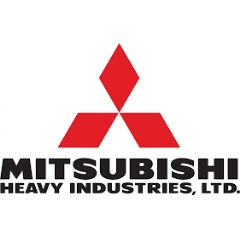MHIEC Receives Order to Refurbish the Hiroshima Naka Waste to Energy Plant
Renovation to Extend the Service Life of the 600 tpd MSW Facility
・ Renovation will extend the service life and increase the energy efficiency of the Naka Incineration Plant, built in February 2004.
・ Completion is scheduled for March 2023, and is expected to reduce CO2†emissions by 9.6% annually.
Mitsubishi Heavy Industries Environmental & Chemical Engineering Co., Ltd. (MHIEC), a Group company of Mitsubishi Heavy Industries, Ltd. (MHI), has received an order from the Hiroshima city government to refurbish the combustion facilities at the Naka Waste to Energy Plant for a municipal solid waste (MSW) in Minamiyoshijima, Naka-ku, Hiroshima, with a total waste treatment capacity of 600 tonnes per day (tpd). MHIEC will refurbish and improve stoker type incinerators(Note1) and related equipment, extending the working life of the facility and enhancing its energy efficiency. The contract is valued at \5.84 billion. Completion is scheduled for in March 2023 (four-year project).
The Naka Waste to Energy Plant was designed and built by MHI, and completed in February 2004. It has three stoker type incinerators, each with a capacity of 200 tpd that operate continuously 24-hours per day, and related equipment. The facility generates 15.2 MW of electricity to power the equipment in the factory, selling the remainder.
The renovation contract comprises the renewal of superannuated core components at the facility, including the receiving and feeding equipment, combustion facilities, exhaust gas cooling equipment, ventilation systems, ash extractors, and instrumentation. The renovation will incorporate MHIECís patented New Incineration Control System to support stable incineration, as well as the use of high-efficiency motors and inverters to increase energy efficiency. These measures will reduce CO2†emissions by around 9.6% annually, helping to curb global warming.
Renovation of waste to energy plants is increasing as operators aim to extend the service life of facilities and reduce their environmental impact. The Japanese national government also established a related subsidy system(Note2) in fiscal 2010, further accelerating this trend.
MHIEC acquired MHIís waste to energy plant business in 2008, incorporating its accumulated technological development capabilities in environmental protection systems, and its broad expertise in the construction and operation of waste management facilities both in Japan and overseas. Based on this strong track record, MHIEC is well positioned to provide comprehensive solutions, from plant construction to operation.
Going forward, on the strength of this record and boosted by this latest contract, MHIEC will pursue additional renovation projects to enhance the energy efficiency and stable operation of existing plants, and actively offer solutions to lower operation and maintenance expenses and other lifecycle costs.
- 1A stoker furnace is the main type of MSW incineration plant. Waste is combusted as it moves along on a fire grate made of heat-resistant castings.
- 2This program is administered by Japanís Ministry of the Environment, and is based on improvements to existing facilities for more effective use, and as a measure to address climate change in the waste sector. Municipal governments seeking to extend the working life of their MSW facilities and implement climate change measures are eligible for subsidies on projects that reduce CO2†emissions (promoting the introduction of leading-edge facilities), or grants for establishing a sound material-cycle society, equivalent to one-half or one-third of project costs.
( Press Release Image: https://photos.webwire.com/prmedia/6/245629/245629-1.png )
WebWireID245629
This news content was configured by WebWire editorial staff. Linking is permitted.
News Release Distribution and Press Release Distribution Services Provided by WebWire.
